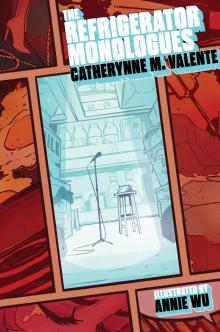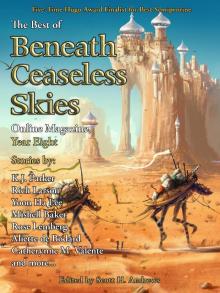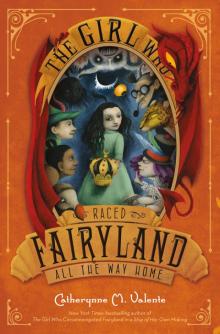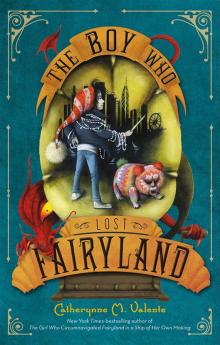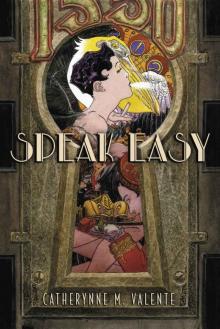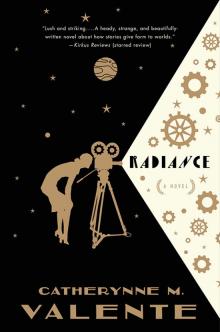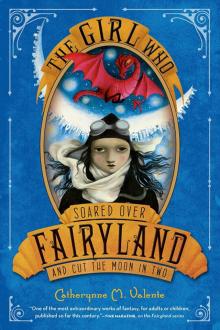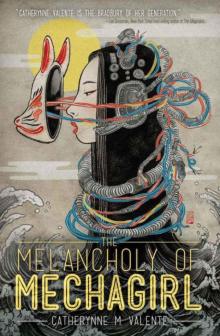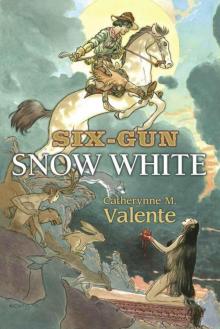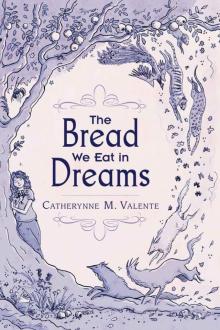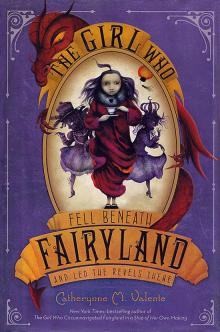


Long Run, Page 20
Catriona Menzies-Pike
The wildlife I terrify. Parrots shear through open paths ahead of me. Dotty little fairy-wrens scatter at my approach. I’ve seen a few snakes and many more species of lizards: skinks, water dragons and geckoes, all trying to put some distance between themselves and my clomping feet. On weekday evenings when the track is clear of bushwalkers, I sometimes catch a glimpse of an echidna truffling in the dirt. Swamp wallabies live near the beaches and, at twilight, curious possums emerge. My presence is that of a great clumsy predator. Catbirds and lorikeets and magpies wheel above me as I trample on ants’ nests and grind moss from the rocks. It’s a shock, on returning to concrete paths, to discover that the surface offers so little resistance.
*
Before I even set foot on a treadmill, I wanted to know what it would feel like to keep running through the many permutations of mood and desire. This regular practice of endurance has been vastly more rewarding to me than chalking up personal bests. And so I’m ambivalent about framing my one conventional marathon success story – my fastest marathon, the one in which training and racing were most closely aligned – as my personal best. Perhaps it should have been the centrepiece to this book, but it feels more appropriate as a coda.
This was the marathon I completed before screwing up in Canberra, on home turf on a dazzling spring day. I’d twice entered the Sydney Marathon, and twice failed to start it. This was the marathon I’d watched my friends finish all those years ago, marvelling at their resilience. That they had sailed over the finish line after running 40 kilometres seemed nothing short of extraordinary. They were made of different stuff to me, I thought; they might have featured in parables about strength and persistence, whereas I was a weary, emotional mess.
The intensity of their endeavour stayed with me. I’d started the half marathon that’s run on the same day as the Sydney Marathon many times. Shivering in the morning shadow of the Harbour Bridge, I’d watched the marathoners preparing – jealous not of how fast they could run, but how far. For me to be lined up in the muster area of that marathon, waiting for the starter’s horn, was an index of many advances. As I waited, I swallowed a few last mouthfuls of cordial, and rolled my head back and around to loosen my shoulders. I checked my shoelaces and stretched my hamstrings. I was relaxed. By now, I knew how to run a marathon.
The Sydney Marathon traces the lengths of roads very familiar to me: I was home. I reckoned that over the years I’d been running, I had covered the first stretch of the race – across the Bridge and into the city – at least a hundred times. I knew the view through the Heads to the Pacific, and I knew the points and bays that led to Parramatta on the west. I’d run along those paths on cold mornings with only a few dog walkers and cyclists for company. On this day, though, the streets were full of runners and noise: the music amplified to pump-up levels, the percussion of feet hitting the pavement in thousands of distinct rhythms, and the gasps, coughs and snorts that are the ambient soundscape of a marathon.
I looked out for my sisters and my cousins, but saw only strangers on the sidelines. I ran with intermittent pain and doubt and the value of that pain and doubt evolved as I ran. And still, my confidence boomed because I had a story to tell about every street that rolled beneath my feet. When I became weary near the inner west, I let the memory of the houses I’d once inhabited distract me. I’d lived here: slept, washed, wept here. What an intimate connection my body had to these streets. I ran past buildings that had once been filled with parties, and boarded-up pubs that I’d sloshed around for years.
If only I could take that lost young woman by the hand and convince her to run with me. I laughed at the idea of this marathoner walking into a warehouse gig and preaching the gospel of endless steady movement to a bunch of drug-fucked club kids – and then I sobbed because that past is out of reach, and I could no more care for my younger self, that daughter without parents, that sad creature tense with denial and confusion, than I could pluck my mother and father out of the plane in which they were travelling when they died and restore them to their seats at opposite ends of the family dining table.
I kept running, across the city and into Centennial Park where the hairpin bends jolted my knees. Tired, wary of injury, I walked for ten minutes, sipping cordial and wondering what everyone else in the park made of the marathon pageantry. A bunch of cyclists cut into the marathon course, hollering war chants and stopping the flow. ‘Go get your fucking lattes!’ yelled an angry runner, and I cackled until I was ready to run again.
Finally – eventually, effortfully – I ran down Macquarie Street, through Hyde Park, down the final loop near the Art Gallery and to the finish line. I crossed the line, ready to stop, but really, if I could have kept running like this, everything moving, the world, me, every human within sight, the past within grasp, the future just a few steps ahead, I would have.
I didn’t fight my way across the finish line – nor did I float. The significance of that marathon didn’t lie in speed or in pain, but in the exchange between my body and the city. I didn’t need a personal best trophy; I could prize the run on its own terms. After many years of early morning runs and all kinds of races, running is to me a way of being, not a way of testing myself against invisible antagonists and not a competition with my peers. I had nothing to vanquish but my doubts, and now – in ways I could never have predicted – running has brought me into a rich communion with the world. It still surprises me. I’m careful not to slip on dirt tracks, and I pay more attention to warnings about overstraining my knees than I used to. I want to avoid injury. I don’t want a show-stopping finish line moment. I want to keep running.
Conclusion:
Stories we tell
I’ve run a half marathon in Sydney every autumn since I started running. In 2015, I signed up again. It had been a difficult few months; there had been deaths in my family, and I felt dejected, depleted. I’d been unwell too, in hospital, and my fitness had sunk, although I hadn’t altogether lost the habit of running.
Once I would have sought solace in a bottle of gin, my dad’s Bessie Smith records, and a bath. Instead, I ran, hoping that some regular rhythm would be restored. I knew that a few longer runs every week would help me sleep better, that having a weird running carnival in my sights would cheer me up. Stress was making me sluggish, and on weekdays I had to talk myself into running as if I were a child: find some clean socks, tie your shoelaces, pull your hair back from your face. I promised myself a hit of adrenaline, draughts of autumn air, the special alertness carried by exertion and, eventually, a consolatory cup of coffee.
Only the long runs on the weekend were straightforward, and I craved these excursions as the working week ground on. I finished one hot, hilly training run behind golf-courses tucked into a green bend of the Brisbane River, and another along the Yarra Trail on a very cold Melbourne morning. In Adelaide, I ran through the manicured Torrens parklands, stopping to peer at the maps posted next to each bridge to make sure I wasn’t lost, that I hadn’t run too far from my hotel. My fitness returned, or at least some of it, and by May I was ready to run a half marathon.
It used to take me ten minutes to roll down the ridge line of William Street to reach Hyde Park, where the event starts each year. Half awake, I could kid myself that I was just out for another training run. To have made it on time from my new perch on the edge of the city, I would have had to wait for a train on a tiny platform in the quietest pitch of the early morning and then shiver in the guard’s carriage for an hour. The cockatoos and koels wouldn’t even have woken to shriek their farewells. Instead, I stayed with Anne the night before, and ate mushroom lasagna and couscous with my cousins as their two enormous labradors licked my feet – good luck, everyone agreed.
The next morning, when the sky was still dark, I rose in an unfamiliar house, fumbling for light switches and teaspoons. With a bib pinned to my singlet, I scurried down a shadowy Glebe Point Road to catch a bus into the city – but all the early buses were full of runners, and the drivers shut
their doors on me. It began to rain. I quickened my pace and made for Hyde Park on foot, worried that I’d be late, that all this effort was for nothing, as if race day was the only day that mattered. Just as the first wave of runners was leaving, I arrived, caught a hint of warmth in the early light, and relaxed. The drizzle stopped. A Sunday morning in May, and I was waiting outside a sandstone cathedral, ready to take my place in a temporary congregation of runners.
The crowd surged down Macquarie Street into the canyons formed by city buildings. Several thousand runners move through narrow streets as a viscous liquid moves through a funnel. I stayed in the middle of the flow, seeking quick currents forward and avoiding the eddies created by groups determined to take every step together. I ran behind a wide middle-aged man with the face of a smiling child printed on the back of his red shirt. I passed girls with orange and lime-green tutus rustling at their hips, a man in a Batman suit, fathers pushing prams.
The distance slipped by, and it wasn’t until I saw the 10-kilometre marker that I started to grumble. I could now recognise this mid-race irritability as a predictable feature of any half marathon. A crisis of confidence and humour would engulf me; a few kilometres later, my mood would be rolling again. I’d almost reached the point where I looked forward to this stroppiness. The stitch in my stomach I blamed on the mushroom lasagna. The ridges of my socks were digging into my feet, tearing into my flesh. I wished that I was fitter, that I felt light on my feet, that this run, at least, could be uncomplicated. I got stuck behind a drift of tall men who spat so vehemently and so regularly that I didn’t dare pass them. Elbows swatted my ribs at the drinks stand; the sponsor’s electrolyte concoction tasted disgusting, and I could hardly swallow it. A twist of black cherry jellies was in my pocket, and when I sucked one, the sugar jolted me back into action.
The roads were slick after the rain. Over the final few kilometres, runners around me started to topple. ‘He went over hard,’ I heard someone say of a kid on a stretcher. ‘Look at her, she slipped and hit her head. There’s no way she’ll make it.’
As I approached the finish line I ran alongside a pair of women, both a little older than me, wearing matching singlets and hats of a luscious pink, their faces pulled taut with emotion. One drew her hand to the small of the other’s back, as if she was pushing her to the end of the course. ‘Think of how far you’ve come,’ she said. ‘You’re almost there. Let the anger go.’ It was an intimate exchange to which I was an uneasy witness.
I left the women behind, but I’m sure they both finished the race – and so did I, in a happy tumble of limbs. I know of nothing that’s as reliable as running for elevations of mood and emotion, for a sense of self-possession.
*
Later that morning, I sat with my grandfather and traced for him the course I’d just run on a map, as my sister arranged pastries on a plate. We ate the danishes, and I answered his questions about new developments on the harbourside and the traffic disruptions caused by the race. Once he was satisfied, he sat back in his chair. ‘Better you than me,’ he said – and, after a pause, ruefully added, ‘I think my running days are over.’
Years earlier, I’d set myself the task of running the City2Surf. It seemed so improbable, I gave no thought to what would happen afterwards. I had no premonition that my running days would go on and on, that running would bring me such comfort. When I finished that first race, my grandfather was walking comfortably, playing golf, driving all over town to drink with his friends, keeping the schoolboy slang of the 1930s in circulation. He doesn’t get around so much anymore. Me, I am still running.
In Lewis Carroll’s Through the Looking-Glass, Alice clambers into a world that at first resembles the one she just left. The surfaces of this new reality are soon distorted, and Alice finds herself in the Red Queen’s garden conducting curious conversations with the flowers. She frightens uppity daisies, and discusses the niceties of petals and thorns with a rose and a tiger lily. The Queen appears and, once again, the world shifts:
Alice never could quite make out, in thinking it over afterwards, how it was that they began: all she remembers is, that they were running hand in hand, and the Queen went so fast that it was all she could do to keep up with her.
I know how she felt. I used to sit in cafes and pooh-pooh morning runners over my latte. Now, I wonder what they’re training for. If I go away to work in another city or on a holiday, I pack my sneakers. The Red Queen explains to Alice: ‘Now, here, you see, it takes all the running you can do, to keep in the same place. If you want to get somewhere else, you must run at least twice as fast as that!’ The boss lady’s race sounds like a patriarchal horror treadmill. It reminds me of that old feminist line about Ginger Rogers having to do everything Fred Astaire did, but backwards and wearing heels. The Red Queen isn’t making a feminist point, not exactly; she’s pointing to the topsy-turvy nature of her world. I’ve run on both sides of the looking glass, and the rules still don’t all make sense to me.
*
My experience as a runner isn’t typical – but whose is? The high-school cross-country runner who returns to distance running in her thirties? The recently divorced mother who starts to run to help her sleep? The bored gym nut who decides to venture out into the world? The elite athlete who devotes her life to running, who wins marathons and breaks world records?
There are bigger stories about women and running that I’ve barely brushed in this book. In 2015, Siabatou Sanneh from Gambia walked the Paris Marathon with a bucket of water balanced on her head, drawing attention to the difficulties that women in West Africa face in accessing clean water. My marathons do not resemble hers, and there’s also little crossover between my experience and that of women who risk social sanctions to run marathons in Morocco and Pakistan, or that of the East African women who travel the world cleaning up on the competitive circuit. In New York I met young Indigenous women from central Australia, brilliant runners, who were about to take part in the Indigenous Marathon Project established by Robert de Castella.
Middle-class white women like me tend to have an easier run of it, and I know that in dwelling on my own experiences, certain assumptions and exclusions have made their way into this book. Maybe the only thing we all have in common, as women, is that we’ve been told we shouldn’t run this far, that we should slow down, be careful. When I look at the women runners around me, I don’t see the restrictions we’ve been told we must accept – I see extraordinary diversity.
Women who run: women with disabilities, fat women, women who’ve recovered from physical injuries, trans women, migrant women, Indigenous women, depressed women, women with no time, women with no kids, ladies of leisure, schoolgirls, retirees, mothers, aunts, grandmothers, queer women, straight women, slow women. Scrutinise any one of these categories and a set of stories that defy generalisation will emerge, stories that destabilise the big stupid myths that say women can’t run, that only certain kinds of women can run, that it’s too dangerous, that it’s unfeminine, that it’s a sign of trouble.
Not one of the women waiting to start the half marathon in Hyde Park knew that I was casting her in an ensemble piece about the many ways women run, that I was ready to listen to the quiet stories her feet might drum about endurance and the bloody marvels of human biology. If I’d taken a survey, each woman would have had something different to say about running – and many, I’m sure, would have disputed the claims I’ve made about the sport. ‘I’ve never felt scared running alone at night,’ one of the ladies in the pink shirts might have said, and her friend could have added, ‘I can’t think of anything more romantic than one of those big trackside marriage proposals. Also, waterproof mascara makes me feel great.’
I didn’t plan to write a book about running that drew quite so much on my own trajectory as a runner. How else, though, could I ground my objection to the stock portraits of women who run? I turned my gaze away from the medal winners, the damsels in distress, the renegades, the really fast runners, and looke
d into the mirror. There was a runner I could write about.
Now, the great breach between my running self and the non-runner I believed myself to be has narrowed. Strength and energy ripple through a body that I’d been told was weak. I’ve spewed up all the cultural toxins that made me so sure that it was just me – with my wonky, wobbly legs and over-developed self-consciousness – who couldn’t run. I know I’m not the only person to have kidded herself like this. I might not have become a champion, but I’ve become a runner, and somewhere along the way I stopped raging about what my life might have been like if that plane hadn’t crashed. That’s a life that I can now see has been plotted by surprises: including both an horrific plane crash and the discovery of contentment in running. I’ve been fit enough to run marathons and, in between, I have slowed down and sped up again, delighted by my body’s capacity for renewal. There are many limits to my progress as a runner: some of them lie within me, some are beyond my control. Instead of trying to master the contingencies, I just live with them.
Grief is no longer so strange to my peers; many have now endured the kinds of loss that are rare to twenty-year-olds. Had my parents died when I was thirty-five, I wouldn’t have felt so alone. I know now that some people go into paroxysms over the death of a distant relative, and that others sit quietly with their hurt for years. I’ve watched friends assiduously confront grief and return to life with determination, only to find themselves helpless when the pain surges again. The lonely specifics of loss can rarely be dressed in off-the-rack narratives. Grief leaves people confused, self-destructive, lost to themselves – at least for a while – far more often than it creates heroes. If someone has a sad story to tell, I listen, because no story is sadder than the one that goes unheard. Were a melancholy person to ask my advice, I’d tell her that running moved me, restored to me my vigour – then I’d remember that in my grimmest moments, I would have lashed with fury the proposal that I go running. When I run, I’m reminded that lives can change and habits can be broken, that movement can simultaneously be metaphor and action.




